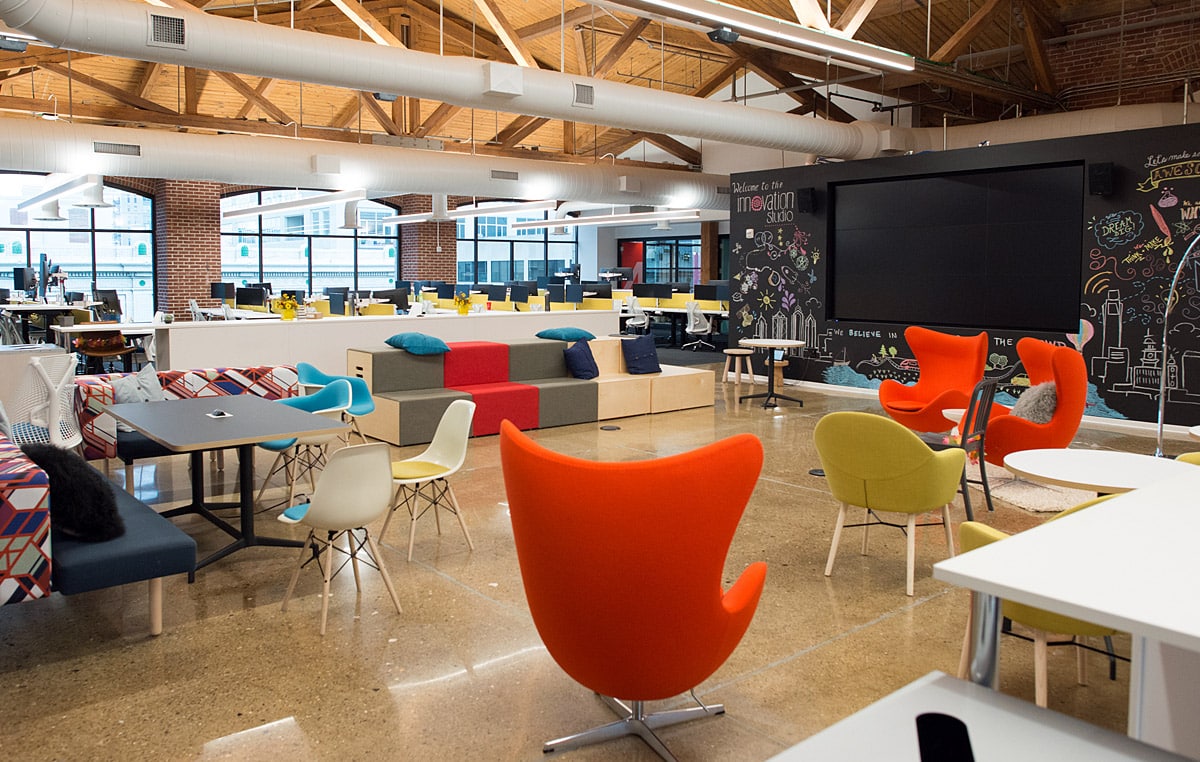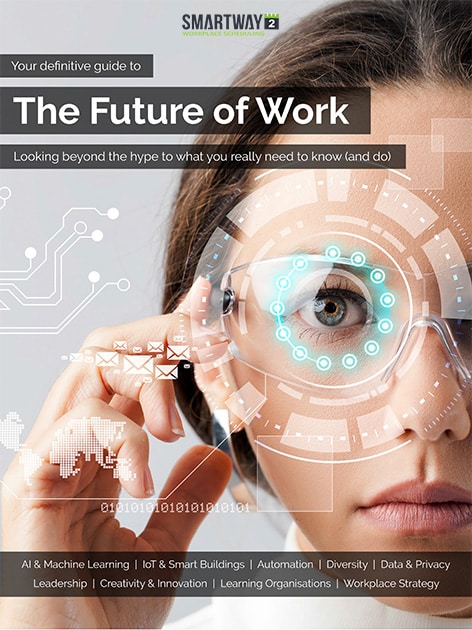
What does Activity Based Working (ABW) really mean?
Thanks to our ever-changing world, the traditional model of employees being assigned a desk is fast becoming a thing of the past.
In its place are workplaces designed with flexibility in mind, providing employees with a diverse range of work spaces such as lounges resembling living rooms and phone boxes for private business calls.
Companies like Google and Facebook are at the forefront of innovation in this field. They adopted activity based working before it was “cool” and never looked back. From then, businesses both large and small across the globe have followed in their footsteps.
Welcome to the new world of Activity Based Working (ABW)
What is Activity Based Working?
Employees want more autonomy, flexibility and the ability to choose when and where they work to fit with their lifestyle. Activity Based Working (ABW) is a concept built on the idea that office work no longer needs to be in a fixed location. It disregards the idea that employees need assigned work stations and desks, and instead supports employees by viewing work as a fluid activity that can change on a daily basis.
This can involve setting up a relaxation area where employees can take time away from their workstations, grab a coffee and chat with other colleagues. Other offices have implemented office pods, where employees can take private phone calls or calls with clients without disrupting the office and having people eavesdrop on private conversations.
To some, this may seem like a relatively new concept, but it all started when Robert Luchetti, an American architect started working on the concept of alternative office environments back in the early 1980s. The term ‘activity based working’ was then coined in the “Art of Working” by Erik Veldhoen.
Activity based working is a crucial part of an agile work environment. It enables each employee to organize their work activities in a more productive and enjoyable way, to help them achieve the best results possible.
When is the best time to implement activity based working?
There’s never a bad time to implement activity based working, but as a business owner you must respect that ABW can mean a huge cultural shift and can be a daunting task for some employees (and leaders). Getting everyone on board with a new flexible working environment requires a combination of IT investment, employee input and education.
You also must clearly state the goals and benefits of moving towards activity based working, allowing your employees to fully understand how this will actually improve the business, as well as allowing sufficient time to adjust.
Post COVID-19 working environments
Working from home has enabled many employees to create their own personalized work environment that supports their productivity, engagement and mental wellbeing.
We are all operating in challenging times as organizations plan re-boarding amidst the pandemic, yet now could be the best time for your business to implement activity based working to help employees adapt to a new normal.
What are the benefits of Activity Based Working?
- It boosts productivity and engagement as it enables staff to work in the setting they feel works best for them. It increases motivation, creativity and concentration levels.
- Increased teamwork and collaboration are encouraged with ABW, giving you and your team the flexibility to swiftly respond to opportunities as and when they emerge. Your employees can move around the office without feeling stuck in one place, allowing them to share ideas and thoughts with other team members.
- More efficient use of space and cost savings as dedicated desks require businesses to pay for furniture, storage and equipment for every employee. ABW environments allow business owners to be creative with space, making for a better workplace environment.
- The health and wellbeing of your staff will improve. Activity based working can have a positive impact on mental wellbeing of staff. According to some studies, Sitting is the new smoking and by implementing ABW you are encouraging your staff to move around the office more.
- Attract more talent with an ABW approach as many office workers now want to work for companies that offer flexible working. Not only does it help attract new talent, but it also helps keep them in the long term!
What are the drawbacks of Activity Based working?
- Resistance to change can arise from staff who prefer a traditional working environment or feel territorial about their space. They may feel activity based working will make them less productive. With proper education on the ‘why’ behind the changes, employees will be more willing to adapt.
- Work space hogging could arise as a problem as people may stick to one zone all the time, preventing other employees from reaping the full benefits of activity based working. This drawback can be resolved with a space management system, such as Smartway2!
- Lack of personal storage due to no assigned desks can leave your staff feeling insecure and concerned about their personal belongings. Provide the simple solution of secure storage facilities for personal belongings and important work documents to make staff feel at ease.
Adopting the activity based working model is an excellent workplace strategy. With the right design, policies and technologies in place, you will not only meet the different needs of your employees but also boost your company’s performance. Discover more about the agile workplace in our helpful guides:
- Complete Guide to Agile Working (Part 1)
- Complete Guide to Agile Working (Part 2)
- Complete Guide to Agile Working (Part 3)
Let workspace scheduling transform your business
If you want to see what a data driven approach to space utilisation looks like, request a demo of Smartway2.
Download eBook: The Future of Work
Your definitive guide to the future of work. Looking beyond the hype to what you really need to know (and do). Topics include machine learning, smart buildings, automation and more!



